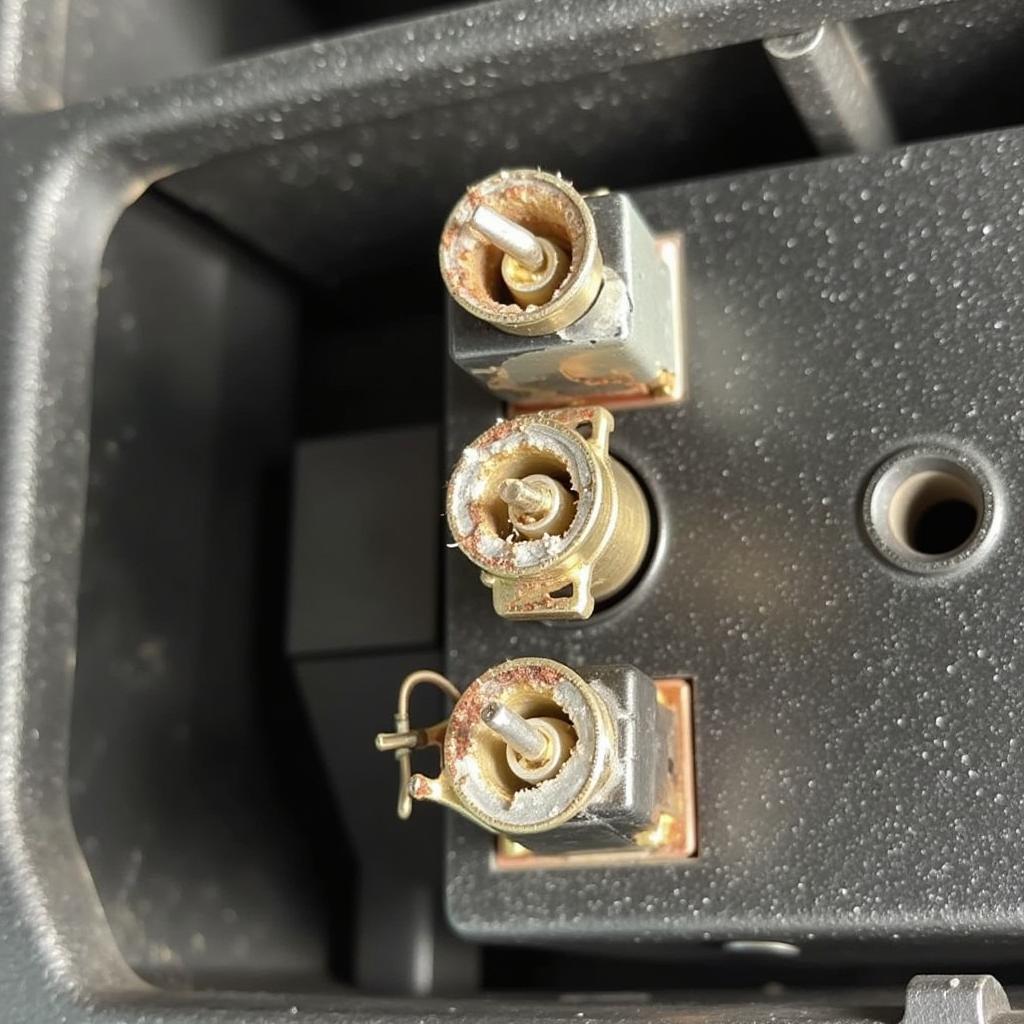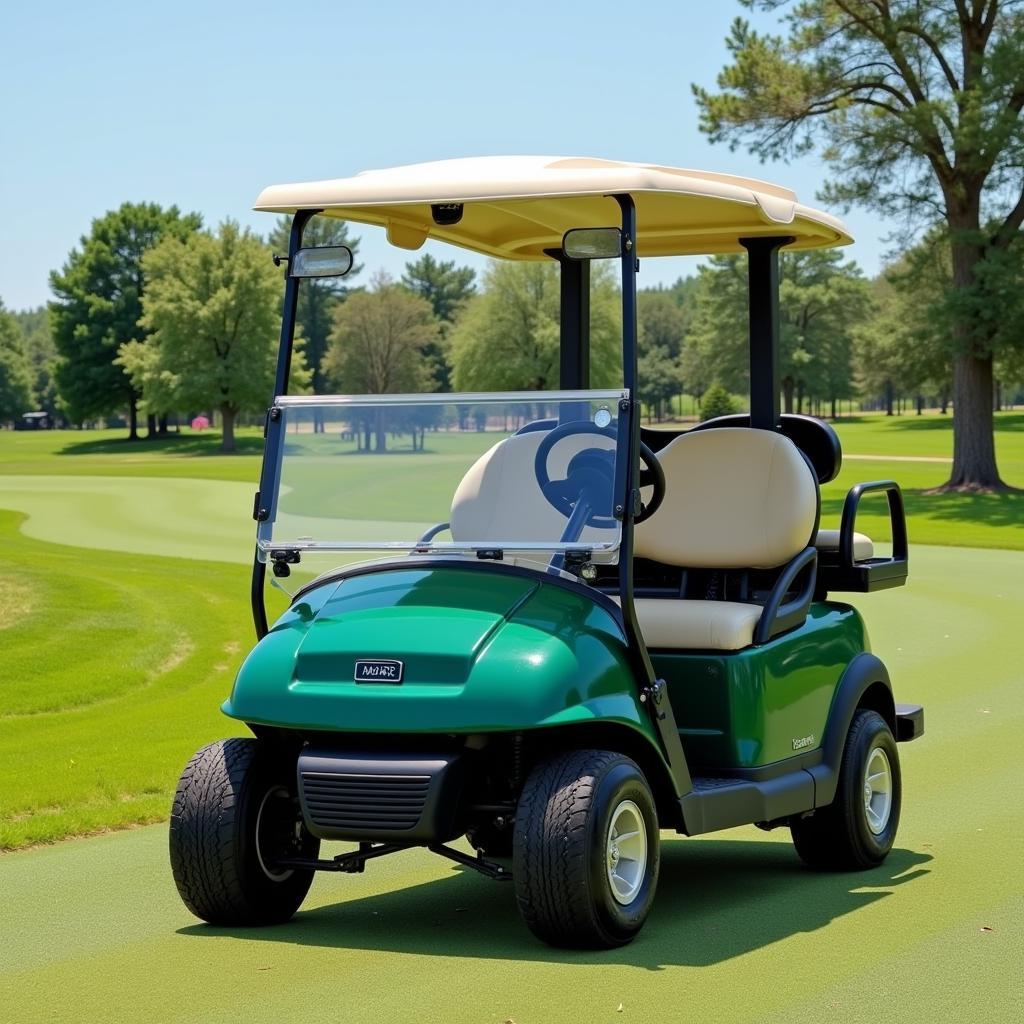Experiencing issues with your Club Car’s forward and reverse switch? This is a common problem that can stem from various causes, from simple wear and tear to more complex electrical issues. This guide will delve into the common “Club Car Forward Reverse Switch Problems” and provide practical solutions for both golf cart owners and technicians. Let’s get your cart back on track! Just after reading the intro, you might find the article about 1994 club car reverse problem helpful.
Understanding the Club Car Forward Reverse Switch
The forward reverse switch is a crucial component that controls the direction of your Club Car. It’s responsible for switching the electrical current to the motor, allowing you to go forward or backward. Over time, this switch can wear out, become corroded, or experience connection problems. Understanding its function is the first step to diagnosing and fixing any issues.
Common Causes of Club Car Forward Reverse Switch Problems
Several factors can contribute to problems with the forward and reverse switch. Some of the most frequent culprits include:
- Corrosion: Exposure to moisture and dirt can lead to corrosion on the switch terminals, disrupting the electrical connections.
- Worn Contacts: With frequent use, the contacts inside the switch can wear down, resulting in poor contact and intermittent operation.
- Loose Wiring: Loose or damaged wiring to the switch can interrupt the flow of current, preventing the switch from functioning correctly.
- Faulty Switch: In some cases, the switch itself may be defective and require replacement.
- Microswitch Issues: Sometimes, the problem isn’t the main forward/reverse switch but a related microswitch, as discussed in resources like club car ds micro switch problems.
 Club Car Forward Reverse Switch Corrosion
Club Car Forward Reverse Switch Corrosion
Troubleshooting Your Club Car Forward Reverse Switch
Before jumping to conclusions, it’s crucial to systematically troubleshoot the problem. This will help you identify the root cause and avoid unnecessary repairs.
- Check the Battery: Ensure your Club Car’s battery is fully charged and supplying adequate voltage. A weak battery can cause various electrical problems, including issues with the forward reverse switch.
- Inspect the Wiring: Carefully examine the wiring connected to the forward reverse switch for any loose connections, breaks, or damage. Tighten any loose connections and replace any damaged wires.
- Clean the Switch Contacts: Use a contact cleaner to remove any corrosion or dirt from the switch terminals. This can often restore proper electrical contact.
- Test the Switch: Use a multimeter to test the switch’s continuity in both forward and reverse positions. If there’s no continuity, the switch may be faulty.
 Testing Club Car Forward Reverse Switch with Multimeter
Testing Club Car Forward Reverse Switch with Multimeter
Replacing the Forward Reverse Switch
If troubleshooting reveals a faulty switch, replacement is necessary. You can find replacement switches at most golf cart dealers or online retailers. The replacement process typically involves removing the old switch and installing the new one, ensuring all connections are secure. Resources like those addressing the 2000 club car reverse problem can provide more specific guidance.
When to Seek Professional Help
While many forward reverse switch problems can be resolved with basic troubleshooting, some situations require professional assistance. If you’re uncomfortable working with electrical components or the problem persists despite your efforts, it’s best to consult a qualified Club Car technician.
 Club Car Technician Inspecting Forward Reverse Switch
Club Car Technician Inspecting Forward Reverse Switch
Conclusion: Getting Your Club Car Moving Again
“Club car forward reverse switch problems” can be frustrating, but they’re often manageable with the right approach. By understanding the common causes and following the troubleshooting steps outlined in this guide, you can often identify and resolve the issue yourself. However, don’t hesitate to seek professional help if needed. Contact Autotippro at +1 (641) 206-8880 or visit our office at 500 N St Mary’s St, San Antonio, TX 78205, United States for assistance.
 Club Car Driving Smoothly
Club Car Driving Smoothly
Need further assistance? Reach out to us at AutoTipPro for expert advice and support.




Leave a Reply